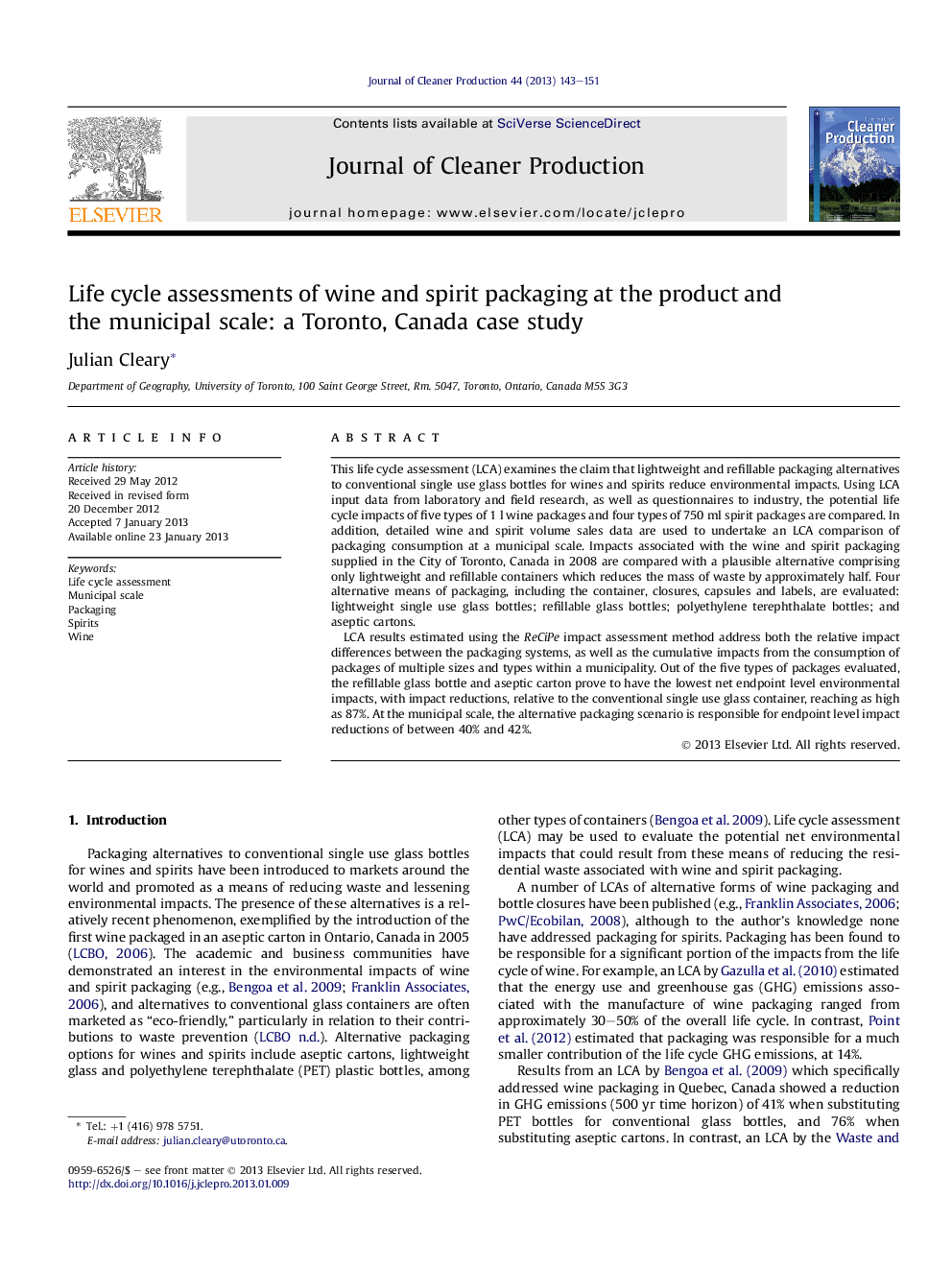| کد مقاله | کد نشریه | سال انتشار | مقاله انگلیسی | نسخه تمام متن |
|---|---|---|---|---|
| 1745570 | 1522202 | 2013 | 9 صفحه PDF | دانلود رایگان |

This life cycle assessment (LCA) examines the claim that lightweight and refillable packaging alternatives to conventional single use glass bottles for wines and spirits reduce environmental impacts. Using LCA input data from laboratory and field research, as well as questionnaires to industry, the potential life cycle impacts of five types of 1 l wine packages and four types of 750 ml spirit packages are compared. In addition, detailed wine and spirit volume sales data are used to undertake an LCA comparison of packaging consumption at a municipal scale. Impacts associated with the wine and spirit packaging supplied in the City of Toronto, Canada in 2008 are compared with a plausible alternative comprising only lightweight and refillable containers which reduces the mass of waste by approximately half. Four alternative means of packaging, including the container, closures, capsules and labels, are evaluated: lightweight single use glass bottles; refillable glass bottles; polyethylene terephthalate bottles; and aseptic cartons.LCA results estimated using the ReCiPe impact assessment method address both the relative impact differences between the packaging systems, as well as the cumulative impacts from the consumption of packages of multiple sizes and types within a municipality. Out of the five types of packages evaluated, the refillable glass bottle and aseptic carton prove to have the lowest net endpoint level environmental impacts, with impact reductions, relative to the conventional single use glass container, reaching as high as 87%. At the municipal scale, the alternative packaging scenario is responsible for endpoint level impact reductions of between 40% and 42%.
Journal: Journal of Cleaner Production - Volume 44, April 2013, Pages 143–151